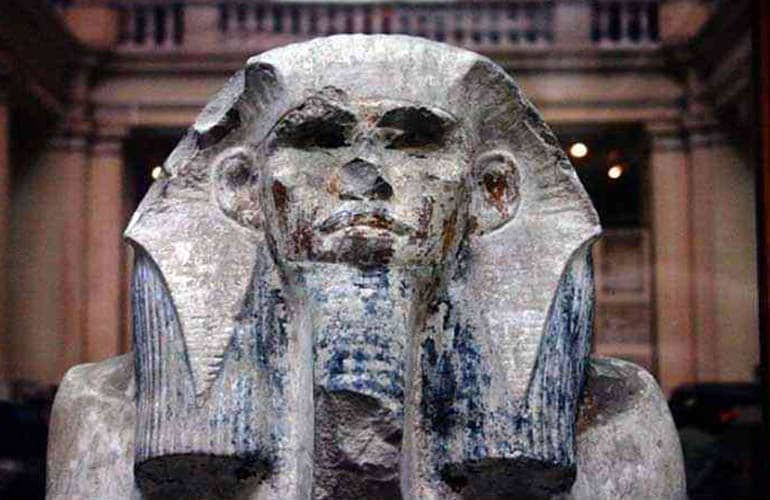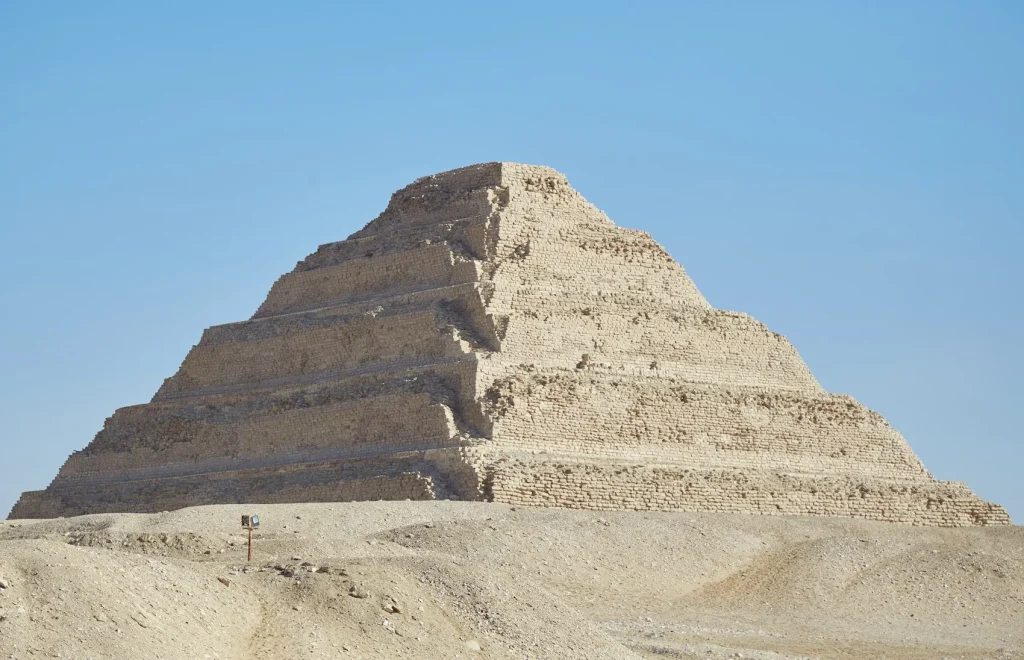Djoser, the first king of the 3rd dynasty, was a visionary leader who revolutionized the use of stone architecture in ancient Egypt. He is widely credited with undertaking the construction of the earliest important stone building in Egypt, and his reign was marked by great technological innovation in the field of architecture. Djoser’s minister, Imhotep, was a talented architect and physician who played a crucial role in the construction of the step pyramid of Saqqara, which is considered to be the first of its kind.

Under Djoser’s leadership, Egypt experienced a period of great expansion and prosperity. He was the first pharaoh to live exclusively at Memphis, eschewing the traditional practice of traveling between palaces. This allowed him to focus on consolidating his power and expanding Egypt’s influence. During his reign, he extended Egypt’s power south to Aswan and north to the Sinai, cementing the country’s position as a major regional power.
One of Djoser’s most enduring legacies is his role in saving Egypt from a seven-year famine. He accomplished this by rebuilding the Temple of Khnum, the god of the source of the Nile River. This feat of engineering was a testament to Djoser’s resourcefulness and his ability to marshal the resources of his kingdom to solve pressing problems.
Imhotep, Djoser’s minister, was a true Renaissance man who devoted himself to a wide range of pursuits. He is best known for his contributions to architecture, having invented the art of building with cut stone. He was also a talented physician and is credited with inventing several surgical tools that are still used today. In addition, he was a prolific writer who contributed to the development of Egyptian literature.
The Step Pyramid of Saqqara
The step pyramid of Saqqara, which Imhotep designed and Djoser commissioned, is one of the greatest masterpieces of Egyptian architecture. Built of limestone, it stands sixty-one meters high and is one of the oldest stone structures in Egypt. The pyramid is surrounded by an extensive funerary complex that occupies more than fifteen hectares, and it is a testament to the skill and ingenuity of Djoser and Imhotep.

In conclusion, Djoser was a visionary leader who transformed Egypt through his innovative use of stone architecture and his commitment to expanding Egypt’s power and influence. His partnership with Imhotep, one of history’s greatest architects, resulted in the construction of the step pyramid of Saqqara, which remains one of the most impressive structures in the world. Djoser’s legacy continues to inspire architects, engineers, and leaders to this day.
Djoser, the founder of the third family, was a visionary ruler who left a lasting impact on Egyptian history. He was the first Egyptian king to delegate a pyramid, a feat that would become synonymous with the pharaohs of ancient Egypt. Djoser inherited the throne from his father Khasekhemwy and ruled Egypt for three decades, during which he accomplished many great feats.
One of Djoser’s greatest passions was architecture and construction. He was fascinated by the monumental structures of ancient Egypt and wanted to leave his own mark on the landscape. Djoser’s most famous building was the Djoser pyramid, a masterpiece of engineering and design. The pyramid was made up of six rectangular pieces in squares, stacked on top of each other to create the iconic pyramid shape. The final monument was about 21 meters (70 feet) tall and was the first real pyramid in Egypt, setting the standard for all future pyramids.
In addition to his architectural achievements, Djoser was also a skilled military leader. He carried out campaigns in the Sinai, where he subdued outspoken subjects and expanded the reach of his kingdom. Djoser was a just ruler who was beloved by his people, and his reign is remembered as a time of prosperity and stability in Egyptian history.
Final Thoughts
Overall, Djoser’s legacy is a testament to his vision and ambition. He was a true innovator who pushed the boundaries of what was possible in ancient Egypt, and his accomplishments continue to inspire awe and admiration to this day.
